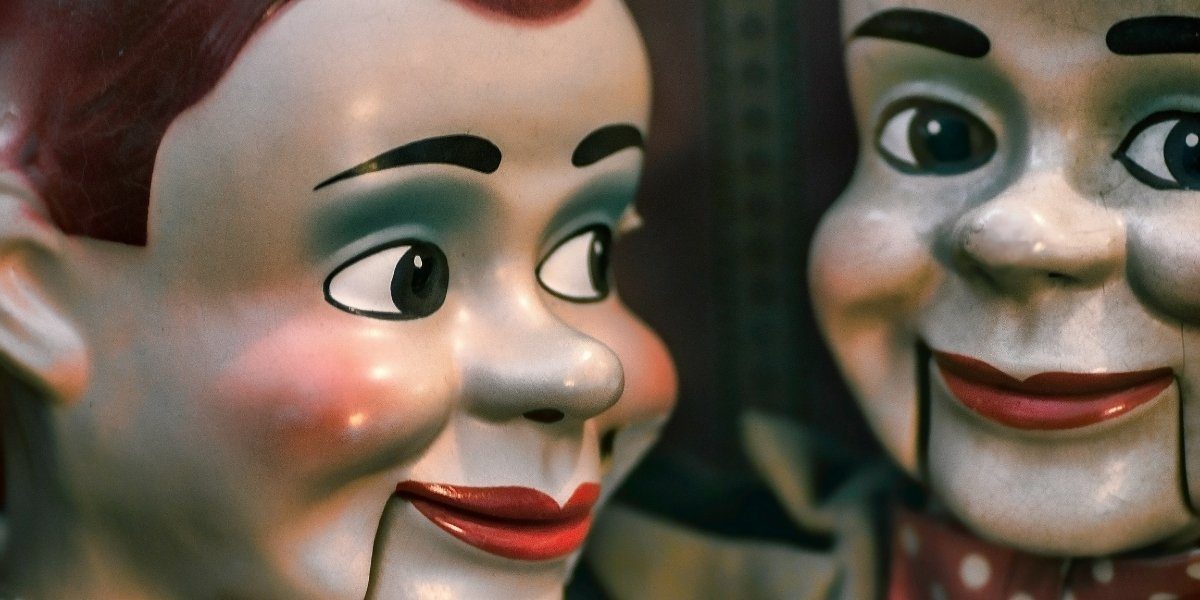The Art and Craft of Puppetry: A Timeless Tradition of Storytelling
Puppetry is an ancient form of entertainment and storytelling, combining art, performance, and craftsmanship. From intricate marionettes to simple hand puppets, puppetry transcends cultures and eras, providing a unique medium for artists to tell stories, convey emotions, and engage audiences. Whether it’s a puppet show for children or a sophisticated performance for adults, puppetry continues to captivate and delight audiences around the world.
We will explore the rich history of puppetry, the different types of puppets, and the creative process behind their making. We’ll also delve into the cultural significance of puppetry and its role in modern entertainment, as well as the future of this captivating art form.
Read Also: How Pottery Strengthens Focus, Patience, and Resilience
The History of Puppetry: A Timeless Tradition
Puppetry is one of the oldest forms of performance art, with its origins dating back thousands of years. While the specifics of its history are difficult to trace, puppetry has been a significant cultural tradition in many parts of the world. Its use spans across theatre, religious rituals, and entertainment, showing the enduring appeal of this unique art form.
Early Beginnings
Puppetry’s roots can be traced back to ancient civilizations. Early examples include shadow puppets in China, marionettes in Italy, and rod puppets in Greece and Egypt. In ancient India, puppets were used to tell epic tales, with performances often involving intricate puppet movements and symbolic gestures.
In medieval Europe, puppetry was frequently used for religious purposes, with mystery plays performed with puppets to educate the masses. By the 16th century, puppetry had evolved into a more theatrical form of entertainment, with elaborate puppet shows gaining popularity across Europe.
Puppetry Across Cultures
Around the world, different cultures have developed their own unique styles of puppetry:
-
Asia: In China, shadow puppetry became an important cultural tradition, with elaborate leather puppets used to tell stories. Similarly, Japanese Bunraku puppetry and Wayang Kulit (shadow puppetry in Indonesia) also became highly sophisticated forms of storytelling.
-
Europe: The Commedia dell’Arte in Italy gave rise to many famous puppet characters like Pulcinella. In England, Punch and Judy shows became a popular form of puppet entertainment.
-
Middle East: Karagöz shadow puppetry in Turkey and Puppetry of the Oppressed in Egypt continue to play important cultural roles.
Throughout history, puppetry has evolved from a form of storytelling to a method of social commentary, addressing themes like politics, morality, and culture.
Types of Puppets: An Overview of Styles and Techniques
Puppetry is not just about the puppets themselves but also about the technique used to animate them. There are several distinct styles of puppets, each requiring different skills and materials to create and perform. Let’s take a closer look at the various types of puppets:
1. Marionettes
Marionettes are perhaps the most recognizable form of puppets. These puppets are controlled by strings or wires attached to their limbs and body. Marionettes can be made of wood, cloth, or even plastic, and their movements are often very intricate and fluid.
Features:
-
Complex control system: Marionettes are controlled by a performer using strings or wires.
-
Highly detailed: Marionettes are often dressed in elaborate costumes and have finely crafted features.
-
Performances: Marionettes require skilled puppeteers to coordinate movements, and their performances are often intricate and choreographed.
Famous Examples:
-
The Nutcracker marionette performances around the holidays are a classic example of intricate string puppet artistry.
-
The Muppets, though not strictly marionettes, are heavily influenced by marionette traditions.
2. Rod Puppets
Rod puppets are controlled by rods attached to their body or limbs. These puppets are simpler than marionettes and are often used in television, film, and stage productions. The rod controls usually give the performer more direct control over the puppet’s movements, allowing for quick and expressive motion.
Features:
-
Rod control: A performer uses rods to move the puppet, often giving more precise control of the puppet’s limbs or body.
-
Simpler than marionettes: Rod puppets are usually smaller and simpler, making them easy to manipulate on stage.
Famous Examples:
-
The Muppets, created by Jim Henson, are perhaps the most well-known rod puppets. Characters like Kermit the Frog and Miss Piggy have become icons of pop culture.
3. Hand Puppets
Hand puppets are the most common type of puppet used in children’s entertainment. As the name suggests, they are controlled by inserting a hand into the puppet, which typically covers the puppeteer’s entire hand and wrist. Hand puppets are popular in puppet theaters, schools, and children’s programming.
Features:
-
Simple control: The performer controls the puppet by using their hand and fingers inside the puppet.
-
Direct interaction: Hand puppets often have larger-than-life facial expressions, making them more engaging for younger audiences.
Famous Examples:
-
Sesame Street characters like Elmo and Big Bird are well-loved hand puppets.
4. Shadow Puppets
Shadow puppetry involves manipulating flat, cut-out figures in front of a light source to cast shadows on a screen. This form of puppetry is particularly popular in Asia, especially in Indonesia, Turkey, and China, and is known for its distinctive silhouettes and dramatic storytelling.
Features:
-
Shadow play: Puppets are often flat and made of opaque materials like leather or cardboard.
-
Minimalistic: The performance is based on shadow play rather than physical puppet interaction.
Famous Examples:
-
Wayang Kulit, a traditional Indonesian shadow puppet performance, is a popular and highly developed form of shadow puppetry.
5. Hand-and-Face Puppets (Ventriloquism)
A unique form of puppetry, ventriloquism involves the ventriloquist speaking for a puppet, using controlled mouth and facial movements to create the illusion of the puppet speaking. This form often uses puppets that are operated with the hands or that rest on the ventriloquist’s lap.
Features:
-
Ventriloquism skill: The puppeteer does not move their lips or speak audibly while performing, creating a magical illusion of voice and character.
-
Performative interaction: The ventriloquist creates interaction between themselves and their puppet.
Famous Examples:
-
Ventriloquist puppets like Edgar Bergen’s Charlie McCarthy and Jeff Dunham’s Achmed the Dead Terrorist have brought this form of puppetry into the mainstream.
The Craft of Puppetry: Creating a Puppet Masterpiece
Making a puppet is an art form in itself. Puppetry combines craftsmanship, painting, sewing, and mechanical engineering to create something that moves and communicates. Each type of puppet requires a different set of skills and materials, and the crafting process can vary significantly depending on the desired outcome.
Materials Used:
-
Wood: Often used for marionettes or rigid puppet frames.
-
Fabric: Common in hand puppets and softer puppets, fabric allows for more flexible movement.
-
Leather: Traditional shadow puppets and some types of marionettes use leather due to its durability and ability to hold detailed designs.
-
Plastic and Foam: Modern puppets, including those for films, may be made from plastic, foam, or latex to allow for easy manipulation and lightweight construction.
Techniques:
-
Sculpting: Some puppet makers begin by sculpting a model of the puppet’s head, body, and other features.
-
Molding: Silicone molds may be created to reproduce the puppet’s parts with precision.
-
Costuming: Much like a costume designer, puppeteers craft elaborate costumes that fit their puppet’s character and enhance its performance.
The Role of Puppetry in Modern Entertainment
While puppetry may have originated as a form of folk entertainment or cultural ritual, it has evolved into a major force in contemporary theatre, film, and television. From live performances to feature films, puppets continue to capture the imagination of audiences of all ages.
Modern Puppetry in Film and Television:
-
The Muppets: Jim Henson’s iconic creations have transcended television to become cultural icons, appealing to both children and adults alike.
-
Film: Films like The Dark Crystal and Labyrinth showcase the stunning artistry of puppetry, with puppets and animatronics playing a critical role in creating fantastical worlds and characters.
-
Video Games: Recent developments in virtual puppetry and digital puppetry have allowed the art form to expand into video game and digital entertainment.
Puppetry for Adults:
Puppetry is not limited to children’s entertainment. In fact, adult-themed puppet shows have grown in popularity in recent years, with works like Avenue Q, a Broadway musical featuring puppets with adult themes, gaining major acclaim.
Read Also: How Short-Form Videos Are Shaping the Future of Social Media
The Everlasting Charm of Puppetry
Puppetry is a timeless and versatile art form that continues to captivate audiences around the world. From the traditional, cultural performances to the modern, innovative works seen on stage and screen, puppetry remains a powerful method of storytelling. Whether you are a fan of live performances, fascinated by the craft, or simply enjoy the magic of these animated creations, the world of puppetry offers endless opportunities for exploration and appreciation.
Whether you are a budding puppeteer or simply an admirer of this incredible art form, the craft of puppetry invites creativity, imagination, and emotional connection. Its future is bright, and it remains a valuable part of both traditional and modern entertainment.






